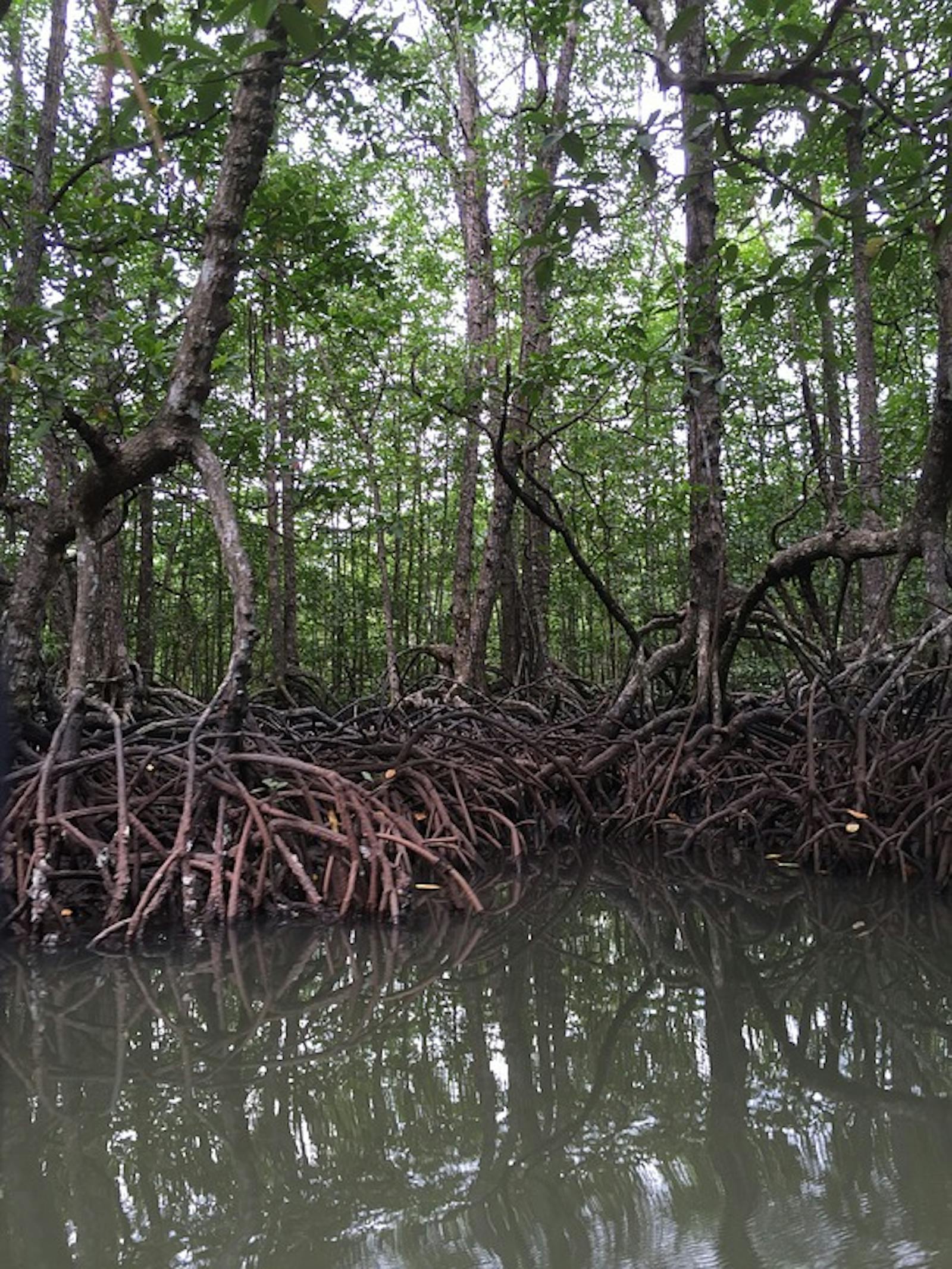Sunda Shelf Mangroves
The ecoregion’s land area is provided in units of 1,000 hectares. The conservation target is the Global Safety Net (GSN1) area for the given ecoregion. The protection level indicates the percentage of the GSN goal that is currently protected on a scale of 0-10. N/A means data is not available at this time.
Bioregion: Borneo Tropical Forests & Sundaland Heath Forests (IM16), Peninsular Malaysian & Sumatran Tropical Rainforests (IM18)
Realm: Indomalaya
Ecoregion Size (1000 ha):
3,753
Ecoregion ID:
322
Conservation Target:
52%
Protection Level:
3
States: Indonesia, Malaysia, Brunei
The Sunda Shelf Mangrove ecoregion lines the coasts of the islands of Borneo and Sumatra, astride the geologically active fault known as the ‘Ring of Fire’ that arcs around the Pacific Ocean. Earthquakes and volcanic activity are frequent along this fault, at times triggering destructive tsunamis. The frequent cyclones and extreme tidal fluctuation causes powerful wave surges that batter the coastlines. These mangroves are then the first lines of defense against these forces, preventing erosion and protecting the coastal areas.
Studies show that mature mangroves can absorb and dissipate large amounts of the hydrodynamic forces from tsunamis. Thus, conservation of mangroves is an imperative, not just for their important ecological functions, such as being a nursery for fishes, but also to protect coastal communities in one of the most geologically active and vulnerable places on Earth.
.jpg)
The flagship species of the Sunda Shelf Mangroves ecoregion is the Avicennia spp. Image credit: Alecc, iNaturalist
The Sunda Shelf Mangroves also rank among the most biologically diverse places on Earth. There are five major mangrove associations in the region, classified based on the dominance by species of Avicennia, Rhizophora, Sonneratia, Bruguiera, or Nypa. The relative occurrence of each is based on the combined characteristics of soil conditions, salinity, and the tidal regime.
Usually the seaward sediments are dominated by Avicennia-Sonneratia forest, with the softer and deeper mud sediment inland dominated by Rhizophora-Bruguiera forests. Further inland where the soils are firmer and there is more freshwater influence, Nypa palms begin to dominate. About 28 species of mangrove trees comprise the forests of this ecoregion, and these include Aegiceras corniculatum, Avicennia alba, A. lanata, A. marina, A. officinalis, Bruguiera cylindrical, B. gymnorrhiza, B. parviflora, B. sexangula, Ceriops decandra, C. tagal, Excoecaria agallocha, Heritiera littoralis, Kandelia candel, Lumnitzera littorea, L. racemose, Nypa fruticans, Phoenix paludosa, Rhizophora apiculate, R. lamarckii, R. mucronata, R. stylosa, Scyphiphora hydrophyllacea, Sonneratia alba, S. caseolaris, S. ovata, Xylocarpus granatum, and X. moluccensis.
Pioneer species of Avicennia marina, A. alba, and Sonneratia caseolaris form mangrove shrub communities along the coast and new delta areas.[iii] Tall grasses, such as Phragmites karka, and screw pines, are part of this community. Relatively young mangrove communities of Rhizophora spp. with a single layered canopy transitions into mixed stands with Bruguiera, Xylocarpus and Excoecaria agallocha with time. The Nypa community is formed almost entirely of this palm with some Lumnitzera spp., Excoecaria agallocha, Heritiera littoralis, Instia bijuga, Kandelia candel, and Cerbera manghas.
The proboscis monkey is a charismatic primate in the mangroves in Borneo, but is absent in Sumatra. The mammals recorded from mangroves include several smaller wild cats such as the leopard cat and flat-headed cat, otters (smooth coated and Asian small-clawed), mongooses and civets (common palm civet, large Indian civet). The diverse bird community found here includes large birds of prey, such as the white-bellied sea eagle, Brahminy kite, several species of herons, cormorants, plovers, sandpipers, kingfishers, terns, and even smaller sunbirds, munias, and tailor birds. Numerous species of monitor lizards, turtles, and amphibians add to the diversity.
Like other mangrove forests in the region, this ecoregion is under tremendous threats from logging, shrimp farms, and agriculture conversion. Trees are harvested for fuelwood, charcoal, and timber. About half the mangroves still remain, most are degraded and under threat from further conversion.
Thus, the recommended priority actions are to: 1) protect the remaining mangroves for their biodiversity and ecosystem functions and services, including as a coastal defense system; 2) stop further clearing of mangroves for shrimp farms; and 3) restore mangroves in vulnerable areas.
Citations
1. Kusmana, C., 2014. Distribution and current status of mangrove forests in Indonesia. In Mangrove Ecosystems of Asia (pp. 37-60). Springer New York.
2. Low, J.K.Y., Arshad, A. and Lim, K.H., 1994. Mangroves as a habitat for endangered species and biodiversity conservation (pp. 157-165). Chulalongkorn University.
3. Alongi, D.M., 2008. Mangrove forests: resilience, protection from tsunamis, and responses to global climate change. Estuarine, Coastal and Shelf Science, 76(1), pp.1-13.



